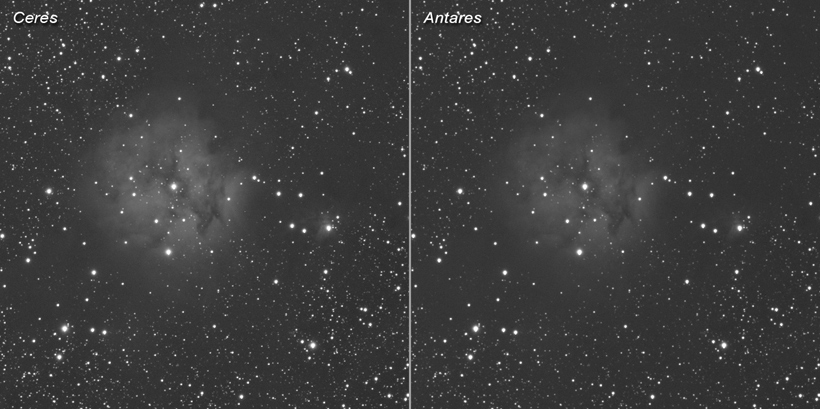|
Man-made light emission largely limits the magnitude of stars and other objects we can see in the night sky, either by the naked eye or with a telescope. Increasing population density and badly illuminated billboards result in bright skies. Also in astrophotography lightpollution is a big problem: Total exposure times have to be increased dramatically to get pictures of dim objects. There are many sources of light pollution around the Antares Observatory and things unfortunately don't get better with time. The maximum magnitude reached here is about mag 5 at its best (not before roadlights have partly been switched off). |
|
 |
 |
|
Below you see two lightpollution maps of the area. For additional information, see also:
|
|

[Cinzano et al. Blackwell Science] |

[www.darksky.ch] |
Practial example: |
|
|---|---|
|
Here I show the effect light pollution has for astrophotography. Using the identical imaging train
(same telescope, same camera, same camera settings) under very similar sky conditions (in terms of sky
transparency), images from the same objects were taken on two subsequent nights. To better see the real
effect light pollution has the test images were stretched with a single non-linear function. The exact
modifications on all images are given below. |
|

Figure 1: Approximate location of both observatories where test images have been acquired. Note
that this map shows the situation of 2001. The situation got worse but I could not find an more accurate map. |
|

Figure 2: Equal Scaling |
|

Figure 3: Equal Background Brightness |
|

Figure 4: Equal Nebula Brightness |
|
|
Bottom line: For an image with equal quality I need to at least(!) double the number of single images
when the data is acquired at the Antares observatory. Or in other words, I could double the number of
images within the same observation time without quality loss! |
